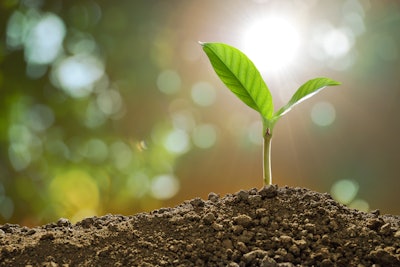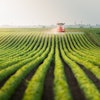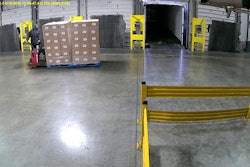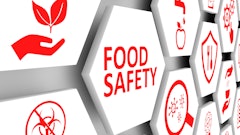
If you’re reading this with a full stomach and well-stocked pantry, consider yourself fortunate. Nearly 800 million of our fellow human beings go to bed hungry every night, and the global Coronavirus disease (COVID-19) pandemic has put another 130 million at risk for food insecurity. Hunger is becoming even more serious as the planet warms, arable land is degraded and the population grows.
To meet this existential challenge, intensified by pandemic-related supply chain interruptions, the world desperately needs new, better ways of growing fruit and vegetables closer to where they’ll be consumed. And, these methods need to be put into practice now.
The problem
How bad is the problem? Climate change, urbanization and uncontrolled grazing are damaging arable land around the planet, with 80% already in use and 23 hectares per minute sacrificed to drought and desertification alone, according to the United Nations. Meanwhile, the global population is projected to grow to 8 billion in 2023 and 10 billion by 2056, threatening to widen the deficit between food and hungry people. Feeding 10 billion will require an additional 109 million arable hectares, a landmass larger than Brazil. Compounding the land degradation problem, food production today contributes 26% of the world’s global greenhouse gas emissions.
Hunger can often seem like a problem for “somebody else,” but food insecurity is prevalent even in developed countries. According to the USDA, more than one in 10 U.S. households were food insecure during part of 2018 – i.e., had a “reduced quality, variety and desirability of diet” – and more than 4%, or 5.6 million households, had “very low” food security – i.e., “disrupted eating patterns and reduced food intake.”
Not surprisingly, low-income households are more likely to be food insecure. Many urban, rural and low-income neighborhoods are food deserts where affordable, nutritious food and the supermarkets that would carry it are lacking.
The pandemic, as it shuttered schools, hotels and restaurants, created supply chain challenges that cast another shadow over food security. Softening commercial demand created supply logjams even as consumers flocked to supermarkets to find empty or thinly stocked shelves. Add unemployment and the prospect of a second wave of COVID-19, and access to food is still a concern – even in the rural areas where it is grown.
When produce is readily available, it can still be missing from the table. Fruits and vegetables are typically bred for durability and longevity to survive long trips from factory farms to the store shelf. Have you ever tasted corn that was harvested a week earlier? Lack of flavor is yet one more reason for consumers to reach for processed food.
The solution
The industry needs ways to grow higher yields of fresher, more flavorful fruits and vegetables closer to home and with a lower impact on the environment. This means creatively combining old and new technologies in agriculture and bioscience to deliver more nutritious, responsible, sustainable and desirable foods globally.
Indoor urban farming – with its ability to control growing conditions – is part of the solution. By all accounts it produces higher (or exponentially higher) yields with its longer seasons and vertical arrangements. But, existing indoor farming technology is far from ideal. The energy required to manage the microclimate and generate the lighting conditions for plants to grow indoors tends to nullify the sustainability benefits of being located near the consumer.
Moreover, fruits and vegetables whose genetic characteristics have developed over tens of thousands of years were never intended to grow in dark boxes with artificial lighting alone. No technology can replicate what happens outside in natural sunlight – the gold standard for plant potential.
Indoor farms need precision ecosystems
Attempted urban farming innovations have tended to stay within the limitations of legacy agricultural systems. To achieve the necessary yields, quality and efficiency will require a careful, methodical application of entirely new approaches to crops, operations, facilities, systems and the growing environment (COFSE), all integrated and continuously refined. It’s time to disrupt the current indoor growing model, creating precision ecosystems with features like:
· Abundant natural light using an advanced transparent foil that, unlike plastic or glass, lets substantially the full spectrum of the sun’s light reach the plants, helping them achieve their full genetic (and flavor) potential.
· Supplemental grow lighting that significantly enhances and extends the plants’ photoperiod beyond natural daylight hours, maximizing crop growth and quality and reducing the crop time to harvest by up to 50%.
· A sealed, cleanroom-like microclimate that keeps pests, pesticides and pollutants outside. It would also conserve water, getting 90% of a crop’s needs from within the building envelope.
· A closed-loop convective air circulation system that maintains ideal climatic conditions that remain virtually contaminant free.
· Natural temperature regulation using sunlight and organic foam-based clouds, dramatically reducing air-conditioning electricity requirements.
· A multi-tier stepladder architecture that multiplies bushels per acre by the number of facility levels without sacrificing sunlight exposure.
· Highly automated hybrid hydroponic-aeroponic systems and nutrients continuously optimized by Internet of Things (IOT) technology and machine learning. This automation reduces handling and associated costs, allowing for highest yield and lowest environmental and cost impacts.
All of this begins with careful micropropagation to ensure that food starts with the ideal plant – selected for flavor, yield and nutrition – and results in the plant achieving its full genetic potential.
Precision ecosystems would borrow the best aspects of current growing methods – outdoors, greenhouse and indoors – and replace their shortcomings with better technology and processes. While producing up to 10-20% better yields than other comparably sized indoor farming systems, the approach consumes up to 90% less energy than traditional indoor grow operations.
As rudimentary indoor farms improve and evolve as they must into precision ecosystems, the industry will see more, better-tasting food available closer to home and without the steep environmental costs of older forms of agriculture.
In a world struggling to provide nutritious, good tasting and pesticide-free food to its inhabitants, precision ecosystems are not the only solution, but are the direction needed. It is time to ensure that everyone – in both the developing and developed countries – has what most of us take for granted—a nutritious table, a well-stocked pantry and a full stomach.
















